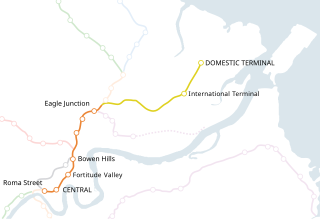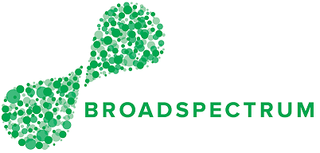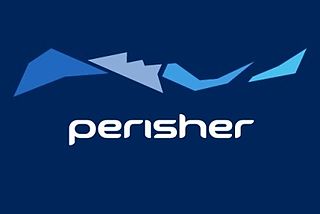
The Sydney Harbour Tunnel is a twin-tube road tunnel in Sydney, Australia. The tunnel was completed and opened to traffic in August 1992 to provide a second vehicular crossing of Sydney Harbour to alleviate congestion on the Sydney Harbour Bridge. It is one of two transportation tunnels under the harbour, the other being a set of rail tunnels for the Sydney Metro.

Airtrain is the privately owned commuter railway line that extends 13.0 km (8.1 mi) northeast from Brisbane, the state capital of Queensland, to Brisbane Airport (BNE) at both its separate International and Domestic terminals. It was opened in 2001.

The Skitube Alpine Railway is an Australian standard gauge electric rack railway in the Kosciuszko National Park in New South Wales. It provides access to the snowfields at Blue Cow Mountain and the Perisher Valley.

Downer Group is an integrated services company active in Australia and New Zealand.

Bullocks Flat is a flat portion of the Thredbo Valley adjacent to the Thredbo River, in the Snowy Mountains region of New South Wales, Australia.
The Biennale of Sydney is an international festival of contemporary art, held every two years in Sydney, Australia. It is a large and well-attended contemporary visual arts event in the country. Alongside the Venice and São Paulo biennales and Documenta, it is one of the longest running exhibitions of its kind and was the first biennale to be established in the Asia-Pacific region.

Broadspectrum, formerly known as Transfield Services, was an Australian and New Zealand company that provided infrastructure maintenance services. Formerly listed on the Australian Securities Exchange, and later owned by Ferrovial, it was then acquired by Ventia who integrated Broadspectrum alongside Visionstream.

Tenix is a privately owned Australian company involved in a range of infrastructure maintenance and engineering products and services to the utility, transport, mining and industrial sectors in Australia, New Zealand, the Pacific Islands, and the United States.
Franco Belgiorno-Nettis was an Australian industrialist and patron of the arts. He founded the construction and engineering company Transfield and also helped establish the Australian Biennale subsequently known as the Biennale of Sydney.

The Airport Link Company is the operator of the Green Square, Mascot, Domestic Airport and International Airport railway stations on the Airport Link tunnel in Sydney, Australia. The line is serviced by T8 Airport & South Line services of the Sydney Trains network.
CIMIC Group Limited is an Australian construction contractor. It is active in the telecommunications, engineering and infrastructure, building and property, mining and resources, and environmental services industries. It has operations in Australia, Southeast Asia, New Zealand and the Middle East. Formerly listed on the Australian Securities Exchange, it is a subsidiary of Hochtief.

The John Holland Group is an infrastructure, building, rail and transport business operating in Australia and New Zealand. Headquartered in Melbourne, it is a subsidiary of China Communications Construction.
Tenix Defence was Australia's largest defence contractor with core capabilities in Aerospace, Land, Marine and Electronic Systems applications. BAE Systems announced its intention to acquire the company from Tenix in January 2008 and the acquisition was completed in June 2008 for A$775 million. BAE Systems Australia thus became Australia's largest defence contractor.
Bob Jenyns is a prolific Australian artist whose practice, spanning over four decades, has produced countless sculptures, prints, drawings, and paintings. He has participated in many of Australia's most significant art exhibitions including the first Biennale of Sydney (1973), the 1973, 1975 and 1978 Mildura Sculpture Triennials, the 1981 Australian Perspecta, the 2nd Australian Sculpture Biennale, and the 1990 Sculpture Triennial. Jenyns was a finalist in the 2006 Helen Lempriere National Sculpture Award, and in 2007 won the award with his work Pont de l'archeveche. He is represented in many of the country's largest collections, including the National Gallery of Australia, the Art Gallery of New South Wales, the Queensland Art Gallery, the Museum of Contemporary Art in Brisbane, and the Tasmanian Museum and Art Gallery. Jenyns has also received multiple grants from the Australia Council's Visual Arts Board, has curated exhibitions and has taught at the Tasmanian School of Art as head of the sculpture department (1982–2005).
Thiess Pty Ltd is an international mining services company based in Brisbane, Australia. Established in the 1930s as Horn & Thiess, the company later became Thiess Bros and Thiess Contractors before being bought by Leighton Holdings in 1983 to become part of the CIMIC Group. Thiess' headquarters are located in the Thiess Centre in South Bank in the Brisbane CBD near the TAFE Brisbane City campus.
Carlo Salteri was a prominent Australian businessman, mechanical engineer, founder of Tenix and co-founder of Transfield.

Perisher Ski Resort is the largest ski resort in the Southern Hemisphere. Located in the Australian Snowy Mountains, the resort is an amalgamation of four villages and their associated ski fields, covering approximately 12 square kilometres (5 sq mi), with the base elevation at 1,720 metres (5,640 ft) AHD, and the summit elevation of 2,054 metres (6,739 ft) at the top of Mount Perisher. 4.4 square kilometres (1.7 sq mi) of this area is covered by 240 snow guns, which are used to artificially supplement the natural snowfall. Perisher was acquired by Vail Resorts, United States on 30 March 2015 for a sum of approximately AU$177 million.
Anthony "Tony" Shepherd is an Australian businessman. The first 15 years of his career were in the Australian Public Service. He joined Transfield Services in 1979, going on to become chairman of the Transfield board. Shepherd resigned from Transfield in 2013.

Ventia is an essential infrastructure services provider based in Australia and New Zealand that provides a range of essential services to clients in both the public and private sectors. Ventia was founded in 2015 and is headquartered in North Sydney, Australia. Ventia has secondary corporate offices located in Auckland, Brisbane, Melbourne, Perth and Adelaide.

The Australian pavilion houses Australia's national representation during the Venice Biennale arts festivals.











